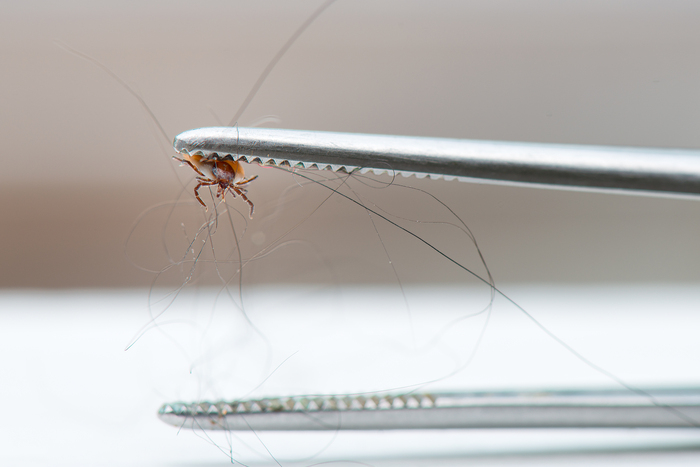
Feel better faster. Get care today.
From the clinic or your couch. Find high quality, same-day urgent care for you and your kids. Book an urgent care visit today.

Tick bites are more common than many people realize, especially in areas with dense vegetation or high wildlife populations. As warmer weather draws more people outdoors, the risk of tick exposure increases, making it essential to take preventive measures. One of the primary concerns associated with tick bites is Lyme disease, a serious infection that can cause long-term health complications if not addressed promptly.
Early detection and treatment are key, as addressing a tick bite quickly can significantly reduce the risk of developing Lyme disease. Understanding how to protect yourself and recognizing the signs of a tick bite are crucial steps in staying safe during outdoor activities.
Tick bites can pose serious health risks because ticks are known carriers of bacteria that cause Lyme disease and other infections. Lyme disease, in particular, is caused by the Borrelia burgdorferi bacterium, which is transmitted through the bite of infected black-legged ticks (also known as deer ticks).
If left untreated, Lyme disease can lead to chronic symptoms, including joint pain, neurological issues, and heart complications. Early symptoms often include fever, headache, fatigue, and a characteristic “bull’s-eye” rash at the site of the bite.
Prompt tick removal and early medical intervention are essential to reducing the risk of Lyme disease and other tick-borne illnesses. This is why knowing how to check for and remove ticks properly is important for anyone spending time outdoors, especially in wooded or grassy areas.
Removing a tick as soon as possible is crucial to reducing the risk of infection. The longer a tick remains attached to your skin, the greater the chance it can transmit bacteria, including the one responsible for Lyme disease. Knowing the correct technique to safely and effectively remove a tick can help minimize potential health risks:
To safely remove a tick:
Several common mistakes people make when trying to remove a tick can increase the risk of infection:
After safely removing a tick, dispose of it properly by flushing it down the toilet or placing it in a sealed plastic bag before throwing it away. If you suspect that Lyme disease or another tick-borne illness is possible, save the tick in a small, sealed container or bag to take to your healthcare provider for testing. It’s also important to monitor the bite site for several weeks for any signs of infection, such as a rash, fever, or joint pain. If any symptoms develop, seek medical attention promptly to address potential tick-borne diseases.
While most tick bites are harmless, some can transmit serious infections like Lyme disease. Knowing when to seek medical attention is crucial, especially if you notice symptoms that could indicate a tick-borne illness.
If you are unable to completely remove the tick or notice that parts of the tick, such as the head or mouthparts, are still embedded in your skin, it’s important to seek medical care. Additionally, visit urgent care if you observe severe redness or swelling around the bite site, as these can be early signs of an adverse reaction. Other concerning symptoms include signs of infection, such as the presence of pus, warmth at the site, or increased pain that does not subside.
One of the most recognizable signs of Lyme disease is the appearance of a bullseye-shaped rash, known as erythema migrans, which typically shows up between 3 and 30 days after a tick bite. In addition to the rash, flu-like symptoms can develop, including fever, chills, headache, and muscle aches. Joint pain and swelling, particularly in the knees, may also indicate that Lyme disease has progressed. If you experience any of these symptoms following a tick bite, visit urgent care for evaluation and potential diagnostic testing.
In some cases, a single dose of doxycycline may be recommended as a preventive measure against Lyme disease, particularly if the tick has been attached for more than 36 hours and was found in an area with a high incidence of Lyme disease. Discussing your risk factors with an urgent care provider can help determine whether PEP is appropriate for you. Taking this preventive step shortly after tick removal can significantly reduce the risk of developing Lyme disease.
When you visit urgent care after a tick bite, the healthcare provider will begin by conducting a physical examination, carefully assessing the bite area for signs of infection or inflammation. They may also ask about recent outdoor activities and areas where you may have been exposed to ticks, as this information helps determine your risk for tick-borne illnesses. Although blood tests are not typically performed immediately, your provider may schedule them for a later date if Lyme disease is suspected, as antibodies usually take several weeks to develop.
If Lyme disease is considered likely, the provider may prescribe a single dose of preventive antibiotics, such as doxycycline, to reduce the risk of infection. Additionally, they will address any symptoms you may be experiencing, such as fever, pain, or swelling, with appropriate medications. Before you leave, the healthcare provider will give you guidance on how to monitor your symptoms over the next few weeks, including what to watch for and when to return if symptoms worsen or new signs appear.
Taking proactive steps to avoid tick bites is essential, especially if you frequently spend time in wooded, grassy, or brush-filled areas. By practicing a few key preventive measures, you can significantly reduce your risk of tick exposure and the potential for tick-borne illnesses like Lyme disease:
Wearing the right clothing can greatly reduce your risk of tick bites when spending time outdoors. Choose light-colored, long-sleeved shirts and pants to make it easier to spot ticks. To minimize skin exposure, tuck your pants into your socks, especially when hiking through wooded or grassy areas.
Applying tick repellents can significantly decrease your chances of being bitten. Use a DEET-based spray on exposed skin, following the product instructions for safe application. For an added layer of protection, wear clothing treated with permethrin, a repellent specifically designed for fabrics. Permethrin-treated gear can help repel ticks effectively, especially during longer outdoor excursions.
Once you come indoors, thoroughly inspect your body and clothing for ticks. Pay special attention to areas where ticks commonly hide, such as behind the ears, along the hairline, under the arms, and around the waistband. Showering as soon as possible helps wash away ticks that may not have been attached yet, and changing into clean clothes reduces the chance of carrying ticks inside.
Keeping your yard well-maintained can help reduce the tick population around your home. Regularly mow the grass to keep it short and eliminate leaf litter, which can serve as a habitat for ticks. Additionally, applying tick control products around the perimeter of your yard can also create a barrier to help keep ticks from entering your outdoor living spaces.
If you've been bitten by a tick or are concerned about potential Lyme disease symptoms, visiting urgent care can provide peace of mind and prompt care. Solv makes it easy to find nearby urgent care clinics, book same-day visits, and get expert advice on tick removal, post-exposure prophylaxis, and Lyme disease prevention.
Tick bites can pose serious health risks as ticks are known carriers of bacteria that cause Lyme disease and other infections. If left untreated, Lyme disease can lead to chronic symptoms, including joint pain, neurological issues, and heart complications.
To remove a tick, use fine-tipped tweezers to grasp the tick as close to your skin as possible and pull upward with steady, even pressure. Avoid twisting or jerking as this can cause the tick's mouthparts to break off and remain lodged in your skin. After removal, clean the bite area with soap and water or an antiseptic like rubbing alcohol.
You should seek medical attention if you are unable to completely remove the tick, if you notice parts of the tick are still embedded in your skin, or if you observe severe redness or swelling around the bite site. Other concerning symptoms include signs of infection, such as the presence of pus, warmth at the site, or increased pain that does not subside.
Early symptoms of Lyme disease often include fever, headache, fatigue, and a characteristic “bull’s-eye” rash at the site of the bite. Flu-like symptoms can develop, including fever, chills, headache, and muscle aches. Joint pain and swelling, particularly in the knees, may also indicate that Lyme disease has progressed.
You can prevent tick bites by wearing protective clothing and gear, using tick repellents, checking your body and clothing for ticks after outdoor activities, and maintaining your yard to reduce the tick population.

From the clinic or your couch. Find high quality, same-day urgent care for you and your kids. Book an urgent care visit today.